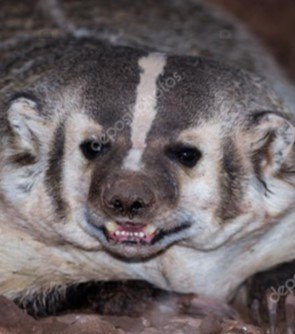- Vlog 48-This SMALL TOWN in Matagalpa has BEAUTIFUL HOUSES!Posted 1 year ago
- Vlog 47-Driving TOUR in the North City of Nicaragua “ESTELI”Posted 1 year ago
- Vlog 46- Leon during Holy Week A GREAT TIME TO VISIT!Posted 1 year ago
- Vlog 45- Moving to Nicaragua – How to Relocate SuccessfullyPosted 1 year ago
- Vlog 44-Fireworks in Leon NicaraguaPosted 1 year ago
- Vlog 43- Is it true Why No Rental Properties in Poneloya & Las Penitas NicaraguaPosted 1 year ago
- Vlog 42-This is the TRAFFIC at NIGHT in Esteli, Nicaragua.Posted 1 year ago
- Vlog 41- Cultural SHOCK in Reverse Trip to the USA from NicaraguaPosted 1 year ago
- Vlog 40-Is U.S Real Estate Market impacting Nicaragua?Posted 1 year ago
- Vlog 38- Why choosing an expensive area in Nicaragua can be a mistakePosted 1 year ago
El Cadejo, a Nicaraguan myth with pre-Columbian origins

By Geoff and Sharisse McCafferty
Have you ever felt like something was following you late at night while stumbling home from a pub, or perhaps a clandestine affair? If so, then perhaps you were being pursued by a black cadejo. According to Central American mythology, cadejos are ferocious dog-like creatures, dragging chains from around their necks – the name ‘cadejo’ may derive from the Spanish term ‘cadena’ for ‘chain.’ They exude a horrible smell of concentrated urine and burning sulfur. Some black cadejos are the devil incarnate, while others are monstruous creatures that will maul their victims. A more common black cadejo can simply cause madness if it bites a person. Whereas nowadays they are depicted as dogs, some cultures associate them with weasels, known colloquially as a ‘tayra.’ Cadejos come in black and white, with black cadejos being ferocious predators while white cadejos protect nighttime travellers. Folklore about cadejos is found throughout Central America, with some regional variation. They were a favorite subject of Guatemalan artist Carlos Loarca, and the ‘Leyenda del Cadejo’ is a short story by Nobel laureate Miguel Asturias.
Is there archaeological evidence for cadejos? In our recent research at Mi Museo we became curious about applique heads found on Pataky Polychrome vases which date to the Sapoa period, ca. 800-1300 CE. Pataky Polychromes are usually decorated in black over a white-slip, with bands of decoration around the periform (pear-shaped) body. Some of the decoration depicts small stylized creatures that have been previously identified as jaguars. The applique head is also identified as a jaguar, and these vessels are traditionally referred to as ‘Jaguar jars.’ But in our research we have become skeptical of traditional interpretations, and as we studied these ‘Jaguar jars’ we began to question the identification.
A common design element on the examples at Mi Museo, and on others that have been published, is a white line down the center of the animal’s face. This is not a characteristic of jaguars, but is found on the American badger, known locally as a ’tejon.’ As anyone who has ever had the misfortune to encounter a badger, these are some of the most ferocious critters in the forest. Predators, even jaguars, will rarely challenge a badger, at their peril. A badger’s favorite snack is the rattlesnake since they are immune to the venom. Among their other charming characteristics, badgers are related to skunks and can exude a strong musky odor to maintain social distance. So based on our study we are inclined to interpret these Pataky heads as badgers.
But did Pataky artists depict pre-Columbian cadejos? Another common characteristic of the Pataky images is a collar around the applique heads that resembles a chain. Metal was not widely used by pre-Columbian Nicaraguans, but copper and gold pendants have been found. A copper bell was found in excavations at El Rayo, just south of Granada. Shell tinklers are even more common. So the suggestion is that these badger/weasel-like creatures, the most ferocious beasts of the land, adorned with chains of metal or perhaps shell, decorated these elaborate drinking vessels. Perhaps as a warning that too much of a good time could attract a cadejo?



